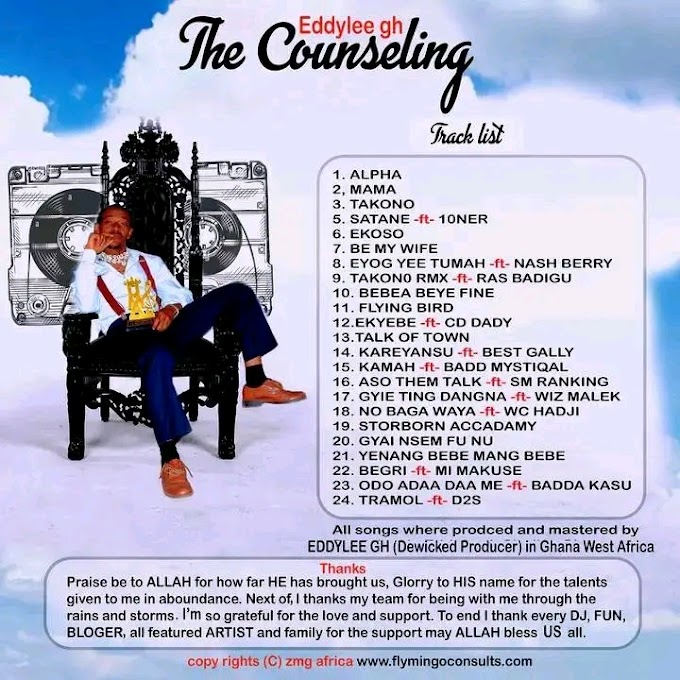 Playlist
Playlist
TECHIMAN ROYALS ANGRY OVER DISTORTION OF HISTORY ON SOCIAL MEDIA
 |
| Buoyemhene Daasebre Ameyaw Kwarteng Amaniampong II, Techimanmanhene Oseadeeyo Akumfi Ameyaw IV, Tuobodomhene Nana Obeng Ameyaw II |
It is very sad how history is being distorted by some group of Ashantis and some lawyers on social media for reasons best known to them. It is an undeniable fact that Bono Techiman was the first centralized Akan state to be founded in the 13th century (1295) by Nana Asaaman with the capital at Amowi, then Yefri and again Bono Manso and finally Techiman. Refer to any history book on the ‘’Rise of Akan Kingdoms (Topic in West African History – Adu Boahen, The Akans of Ghana, Their customs, history and institutions – K Nkansa Kyeremateng etc).
Obiri Yeboah Chief of Kwaman a vassal state of Denkyira who embarked upon wars of expansion in his neighbourhood was killed in the 1690’s in a war against Dormaa who were then occupying the region of Suntreso. His nephew Osei Tutu who succeeded him to continue his mission defeated his overlord Denkyira between 1699 and 1701 to form the Ashanti Kingdom. This victory over Denkyira brought Asante dramatically to the attention at the Europeans on the Coast for the first time and the Dutch dispatching an embassy to the Asantehene’s court in 1701. So how do you say the leader of a state formed in 1701 is the senior brother of a state formed in 1295. Four hundred and six good years (406 years) in existence before the formation of the other. Common sense will even tell us that a person born before you is senior to you.
Bono Techiman state appeared on the Dutch map of 1629 just a few years after Kobea Amanfi has purchased the Kwaman land (now Kumasi) from Aberewa Yeebetuo who owned that area to establish the Kwaman Town, with Tafo, Amakom, Offinso, Dormaa etc already in existence. Techiman existed with Tuobodom and all those villages over 400 years before Kwaman and the formation of the Ashanti Kingdom. Those peddling falsehood on social media platforms should go back and learn the Ashanti history (written by Ashantis and not Bonos) very well before writing things of such kind for the public to read. The earliest Akan group which got established in the Coastal Areas before the founding of the Ashanti Kingdom namely, Fante, Eguafo, Etisi, Afutu, Osu Alata etc claimed association with Bono Techiman Kingdom, how then can the Techimanhene be the Junior brother of the Asantehene if we know our culture and traditions very well. How on earth can someone write that a village which has existed with Techiman and practise all the customs of Techiman like the Monowukuo Festival (Ashantes observing Akwasidae, the Sunday after Monowukuo after learning from their seniors), Yam Festival and the Apoo Festival has been under Techiman while Kumasi which celebrates Akwasidae and Odwira.
BRIEF HISTORY OF SOME OF THE TANO SUBIN TOWNS
TANOBOASE
The Tanoboase people affirm they came from the Amowi caves with Ohene Asaaman (Bono Techiman king). Their leader Nana Kokotipo was the first to come out of the hole before the Bonohene Asaaman and they were thus called Kronti people. Nana Kokotipo settled at Pinihi and later at Nkwakuru. When he died he was succeeded by his brother Amoa Sanka. Amoa Sanka’s brother Takyi Firi a good hunter discovered Tanoboase on one of his hunting expeditions. The sister Afua Ankomaah was possessed by a spirit and that lead to the discovery of the Taa Kora god of Tanoboase.
This Takyi Firi was the founder of the present day Takyiman and the town is named after him. He was the Krontihene of the Bono Techiman king and founded the town on Techimanhene’s land close to a stream where his horses use to drink water and thus the name of the stream Aponkosu near Techiman SHS and also not far from the Golden Barn (Sika Aputuo) of the Bono Techiman king. The Royal lineage of inheritance from Nana Asaaman at Amowi to Nana Kwakye Ameyaw I at Bono Manso and finally to Nana Kyereme Kofi at Techiman has never changed and same royal Oyoko leaders. It is therefore only a sick person who will say Techiman is for another chief or a clan. This same Takyi Firi picked the Twumpuduo god of Tuobodom, Taa Kofi god (Bonse) and Taa Mensah god (Techiman). When Amoa Sanka died he was succeeded by Takyi Firi and the Takyi Firi left the Taa Kora god to the other relatives at Tanoboase led by a brother Fosu Dianwoma to become the Krotihene of Bono Techiman.
The leader of Taa Kora god is the chief of Tanoboase. It is a stool for the Takyi Firi family and thus the relationship between the Tanoboase stool and the Krontihene stool of Techiman. The Taa Kora god asked the people of Techiman to use the Tano river water from the rock of the Taa Kora god, Twumpuduo god of Tuobodom and Atie Kosaa god of Taa Kora for the purification of stools in Techiman. Thus every year water was taken from these god’s for the great stool of Techiman.
During the Yam festival of the Techimanhene the water is first sent to the Akyeamehene’s palace who in turn send it to the Krontihene to use some to purify his stools before the rest is sent to the great Ohene Ameyaw stool for purification. This is done on a Monoyawoɔ, before the Omahene goes to the Adaa River on the Fofie for final purification. He is accompanied by the Tanoboase messengers who blocked the road and would not let him pass until he had paid them some money and drinks.
During the Yam festival of the Taa Kora god the Omanhene sends a sheep, a bottle of gun powder, bottle of schnapps and a bottle of palm oil. The Akyeamehene sends all these items. The occupant of the Tanoboase stool is always the eldest of the Krontire family of Techiman and when the Krontihene of Techiman dies he takes over the Krontire stool until a new chief is enstooled. What relationship has such a chief got with Ashantis who came to meet them and their family after 400 years in existence.
TUOBODOM
The Tuobodom people also came from the hole of Amowi with Ohene Asaaman. Their leader Nana Drobo was the son of Nana Asaaman of Bono Techiman. He was the carrier of Nana Asaaman’s walking stick and was nicknamed ‘’Apoma Kokodwamfo’’. Nana Drobo was a cousin of Nana Takyi Firi who later picked the Twumpoduo god of Tuobodom. The leader of the Twumpoduo god is the chief of Tuobodom and a brother of Takyi Firi the Krontihene of Techiman. As Nana Drobo was the son of Nana Asaaman, king of Bono Techiman, the Tuobodom stool is the son of the Ohene Ameyaw stool and then provides ‘’Ayete’’ (substitute wives) for the Ohene Ameyaw stool, and those social media historians could be shown the children of Techimanhene before the Ashanti kingdom was formed if they are bragging Tuobodom has never been under Techiman.
BUOYEM
The people of Buoyem are Oyoko people who are relatives of Ohene Asaaman of Bono Techiman. The descendants of the first Bonohemaa, Nana Ameyaa Kesse and Ohemaa Dwamena (Dwamerewa) who was the Queen mother of Techiman and was captured and sent to Kumasi during the Techiman and Ashanti war of 1723 are the Buoyem royals. The chief of Buoyem is the uncle of the Ohene Ameyaw stool. Nana Owusu Kwakuru I an uncle of Nana Kwakye Ameyaw I, led the remnant Oyoko royals to Bouyem after the Techiman and Ashanti war alongside two wives of Nana Kwakye Ameyaw I who were of the Aduana and Asenie clans and their children to settle there. These three clans therefore became the original settlers of Buoyem. The Aduana Children later discovered the Mpirisi Grove and its deity and have been the custodians since that time. They are the Kronti family of Buoyem.
The Asenie children of Nana Kwakye Ameyaw I are the custodians of Tano Kwabena (Tanofie people) and occupy the Adonten stool of Buoyem. Nana Owusu Kwakuru I, who took over the Bono kingdom after the war nominated the nephew Nana Takyia Ameyaw I to gather the scattered people to re-establish the once glorious Bono Kingdom. He later turned into a river on the Takyiman – Buoyem road, river Takyia, whilst visiting the uncle at Buoyem.It is a taboo for any sitting Takyimanhene to see the waters of river Takyia when going to the Uncle at Buoyem. The Ohene Ameyaw stool of Buoyem and the Ohene Ameyaw Stool of Techiman are inseparable, hence Buoyem is not and can never be an Asante town. They are the relatives and children of Ohene Ameyaw. When the Ohene Ameyaw stool is vacant and there is no Queen mother, is the chief of Buoyem who can nominate a royal to occupy the Ohene Ameyaw stool. Techimanhene Nana Kyereme Kofi (1783 – 1831) was nominated by the uncle and chief of Buoyem Nana Ameyaw Kwarteng Amaniampong I to occupy the Ohene Ameyaw stool in 1783.
TANOSO
The Afutu Stool or Tanosohene was a stool created by Bonohene Nana Kwakye Ameyaw l (1712–1740) for the children of a woman he married called Afua Owusuaa, therefore the stool is the son of Ohene Ameyaw stool and provides "Ayete" (substitute or stool wife) for the Ohene Ameyaw stool. Their leader was the caretaker of Nana Asaaman's Cup when the Techiman people came out of the Amowi caves and were thus known as “Nkuruwaa foɔ”. The Nkuruwaa family are the Royals of the Tanoso stool. During Apoo festivals the Amprofi stool of Tanoso is sent on foot from Tanoso to Techiman by the Queen mother to embrace the father (Techimanhene) 3 times. At Kuntunuso the odikro brings a white stool for the stool to be put on it and libation poured. At Hansua the stool is put on the labs of the Hansuahene (Barimhene) for libation to be poured before he leads the Queen mother and the stool to the sacred grove of Ohene Ameyaw and finally to the Omanhene’s place for the stool to embrace the father.
From the foregoing these people are pure Techiman citizens and not Ashantes. If these social media historians want to know how these towns got associated with Kumasi then it was in 1818 – 1819 when the Asantehene Osei Bonsu consulted the gods in these towns to assist in the defeat of Nana Adinkra of Gyaman. The leaders of the gods in these villages are the chiefs of the town with the exception of Buoyem. The gods helped him to be victorious especially Taa Kora of Tanoboase and Twumpuduo of Tuobodom. After the victory parade in Kumasi, Nana Osei Bonsu decided to seize these villages from the Techimanhene, Nana Kyeremeh Kofi.
The villages were Tanoso, Tanoboase, Tuobodom, Buoyem, Ofuman, Nkyiraa and Branam. This was a calculated effort to reduce the might and wealth of Bono Techiman. That is after taking all the lands for Offinso from Nfutudwaneemu (near Abofuor) to New Takyiman and all that parcel of land forming the Nkoranza Traditional Area for some Ashantes to rule, the Ashantes still wanted to reduce Techiman to a very small state. No wonder after taking the Queen mother(Bonohemaa), Nana Dwamena (Dwamerewa) captive to Kumasi to show them the customs of items stolen from Techiman they also started using the water fetched from Taa Kora god, Twumpuduo and the Atie kosaa god of Tanoso for the purification of their golden stool.
They definitely therefore wanted to take these villages. ‘’Eii’’ Kantanka you were right with the adage ‘’wo feefee funu ani a wohu saman’’ Also ‘’Kuku dada se osen Domankoma Panyin a nea ɔnwonoeɛ nso nyԑdԑn’’, that is if the old pot says is older than God what about the weaver of the pot. Dare Techiman, Kantanka and your social media historians and you will get more. For no child knows the grandmother more than the mother herself.
Techiman has not fought the British but valuable items in their(British) museums seized from the Ashantes has got inscriptions of Techiman. We do not want anything from the Ashantes but is the Ashantes who always plant people in areas of interest in Techiman to create confusion. Even Paramount chiefs going to swear the oath of allegiance in the Manhyia Palace are being compared to Techimanhene and not any Paramount chief of the Asanteman Council. “Dɔm ani sa nea ɔso ntakra kyɛ ampa”
Part ll to be posted next...
#Bono #Techiman #Abakosem #Ammamere #Akan
Call or Whatsapp 0243396211 to publish your content on this Website









Contents on this website are for promotional purpose ONLY! ADAMS DO NOT claim Full Ownership of any Content on this website, If you see any copyrights infringed Content here kindly contact us.
Contact us
0243396211
kingdombwoy99@Gmail.com
Comment does not reflect the views of ADAMS